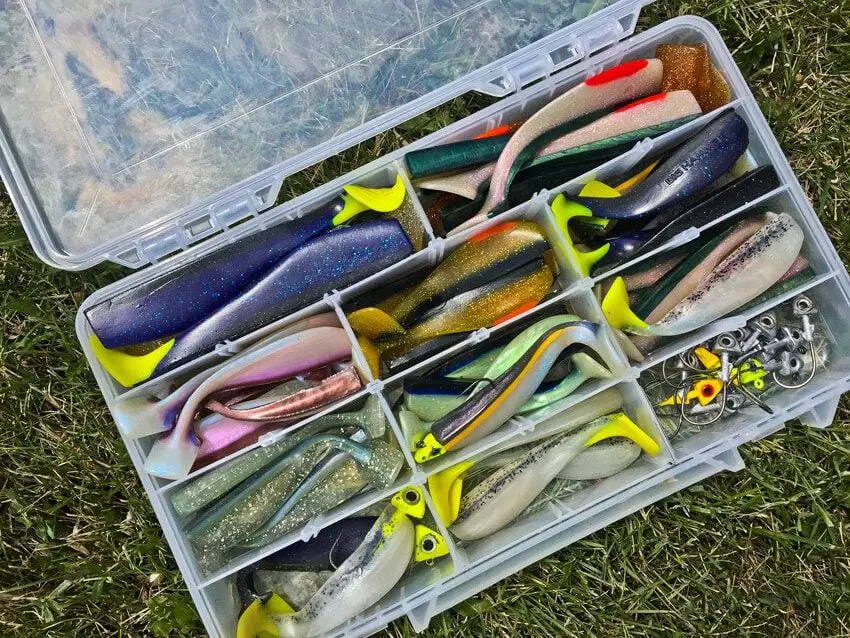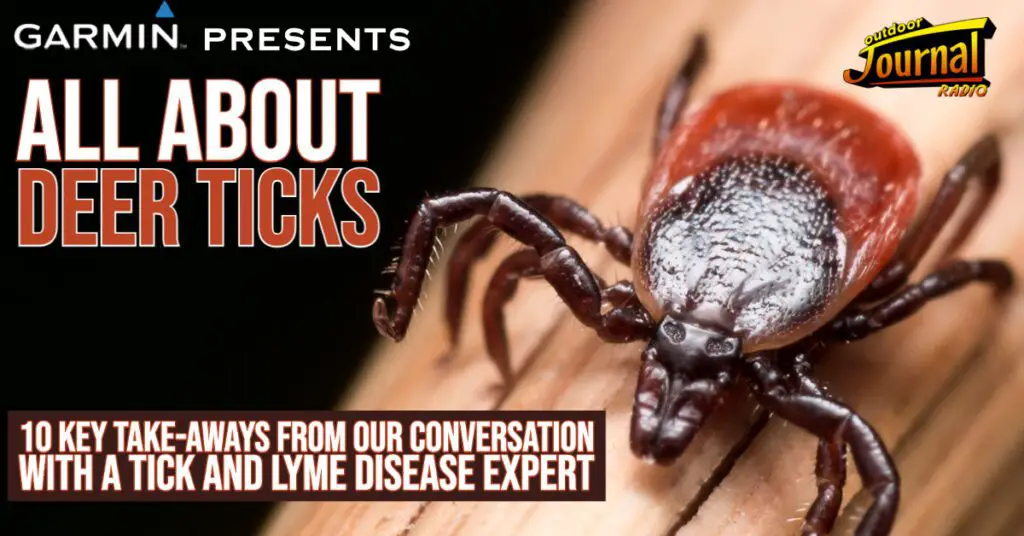As heard on Outdoor Journal Radio
Pete Bowman demonstrates two highly effective methods for how to fix soft plastic baits—saving you money and maximizing your fishing productivity. Pete also provides some handy tips for getting creative and repurposing baits that might otherwise be destined for the trash can.
“Hey, Pete, what is your favourite fishing bait?”
I bet I’ve been asked that exact question a thousand times. My answer is usually another question like, “What species?” or “What location?” Unfortunately, it’s much too broad of a question.
Now, if you were to ask, “Hey, Pete, what’s your favourite artificial bait material?” I would probably say soft plastic. Simply put, I love fishing with plastic baits.
You’ll Always See Plastic Baits On My Boat
I still remember the first time I ever used a plastic worm. It was at Beaver Lake, just north of the town of Napanee, where I spent a lot of my youth. I had a couple of Crème Scoundrel pre-rigged six-inch worms in a #36 purple shade. Honestly, it looked like crap to me, and I would have bet that no fish would come near it.
I took a little rowboat out from our campsite with that pre-rigged snelled worm on a short, stiff, spin-cast rod with heavy monofilament line spooled up. With the worm rigged somewhat weedless, I was into my first-ever soft plastic Largemouth Bass in no time. It must’ve been close to three pounds, too.
“What the…?” was all I could say.
Minutes later, I was into another. I caught both by squirming that worm on, in and among some big lily pads in a tiny back bay.
Not only did that day change my fishing life, but it also changed all my young buddies that were with me. I swear, they thought I was BS’ing them to the highest degree—I could see it on their faces. But eventually, I convinced them that my story was true and that plastic baits indeed worked.
Fast forward to today, and you will almost always see plastic baits on my boat.
Of course, with the word “soft” included in a fishing lure or bait’s description, there are some obvious concerns. These baits can be fragile or delicate or weak. Indeed, soft plastic baits tend to rip, tear, and break. Inevitably, it will happen to you. So here are a couple of methods for how to fix your soft plastic baits.
The Fusion Method
One way I fix soft plastic baits is with a product called Mend-It. At first, it looks like glue, but in actuality, it’s a fusing agent that forces a chemical reaction in the soft plastic material. In simple terms, it melts the material creating a permanent bond.
“Why not use a super glue?” you may ask.
I will use super glues only as a last resort as they are hard to work with and, if put in the wrong spots, can stick unwanted items together—like your fingers, for instance. Try fishing with your thumb and index finger stuck together.
Super glues are great to have on a boat, but for specific purposes.
Mend-It will not glue your fingers together, and it is relatively easy to clean up if a drop or two waywardly falls.
Check out the accompanying video to see how I apply this “magic serum.”
The Torch Lighter Method
The second method I use ti fix soft plastic baits is with the use of a torch lighter. I have one at home on my workbench that I paid over forty bucks for (designed for soldering). I know, crazy. But all I use it for is to fix plastics (and maybe hit the tip of a garage cigar). I chose this expensive lighter after being advised by Mike Nabulsi of Bass Magnet and Waterwolf Lures, an Ontario based plastic bait manufacturer. He used to rely on Mend-It but now torches his repairs. Trust me, this guy knows plastic baits. The reason this lighter works so well is the tiny sharp-tipped flame it produces. With that, I can hit small cuts and tears quickly and accurately.
Of course, you do not need a forty dollar lighter. Zip into any Dollarama, and you can get a “cheapy” for around three bucks at the front counter.
I always carry a small torch lighter or a bottle of Mend-It in the boat for quick repairs. Also, a thin pair of work gloves will often prevent some burned skin as torch lighters shoot out an intense flame. Be careful!
When and Where to Fix Plastic Baits
If I’m fishing and a single colour or bait style is working, and I only have a pack or so of them, I’ll do on-boat repairs to get extra mileage out of a particular lure. I mend by either of the above methods, let the bait sit and fuse for a minute or two and then continue fishing. This has saved my day many times and has caught me an extra tank or two in the process.
If I have a good supply of a certain bait that is working, I’ll simply pile the carnage of broken plastic baits on the deck of the boat, and then once home, I’ll transfer them into the garage for my Dr. Bowman plastic bait fixing session. Liquid or torch? The answer can only be determined upon a full bait examination—a physical, if you will!
In Conclusion
Hopefully, this article and video will ultimately help you during those frustrating times when the fishing is good, but the bait material kinda sucks!







